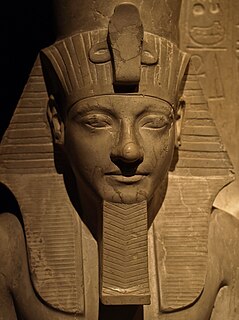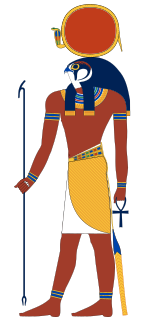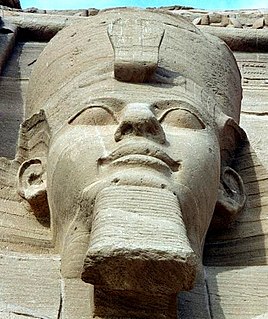
Seti II was the fifth pharaoh of the Nineteenth Dynasty of Egypt and reigned from c. 1200 BC to 1194 BC. His throne name, Userkheperure Setepenre, means "Powerful are the manifestations of Re, the chosen one of Re." He was the son of Merneptah and Isetnofret II and sat on the throne during a period known for dynastic intrigue and short reigns, and his rule was no different. Seti II had to deal with many serious plots, most significantly the accession of a rival king named Amenmesse, possibly a half brother, who seized control over Thebes and Nubia in Upper Egypt during his second to fourth regnal years.

Amenmesse was the fifth pharaoh of the Nineteenth Dynasty in Ancient Egypt, possibly the son of Merneptah and Queen Takhat. Others consider him to be one of the innumerable sons of Ramesses II. Very little is known about this pharaoh, who ruled Egypt for only three to four years. Various Egyptologists date his reign between 1202 BC–1199 BC or 1203 BC–1200 BC with others giving an accession date of 1200 BC. Amenmesse means "born of or fashioned by Amun" in Egyptian. Additionally, his nomen can be found with the epithet Heqa-waset, which means "Ruler of Thebes". His royal name was Menmire Setepenre.

Bintanath was the firstborn daughter and later Great Royal Wife of the Egyptian Pharaoh Ramesses II.
Prince Khaemweset was the fourth son of Ramesses II, who was born c. 1303 BCE; died July or August 1213 BCE; reigned 1279–1213 BCE, and the second son by his queen Isetnofret. He is by far the best known son of Ramesses II, and his contributions to Egyptian society were remembered for centuries after his death. Khaemweset has been described as "the first Egyptologist" due to his efforts in identifying and restoring historic buildings, tombs and temples.
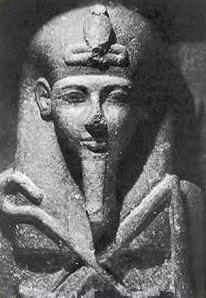
Akhenre Setepenre Siptah or Merenptah Siptah was the penultimate ruler of the Nineteenth Dynasty of Egypt. His father's identity is currently unknown. Both Seti II and Amenmesse have been suggested although the fact that Siptah later changed his royal name or nomen to Merneptah Siptah after his Year 2 suggests rather that his father was Merneptah. If correct, this would make Siptah and Seti II half-brothers since both of them were sons of Merneptah.

Isetnofret was one of the Great Royal Wives of Pharaoh Ramesses II and was the mother of his heir, Merneptah. She was one of the most prominent of the royal wives, along with Nefertari, and was the chief queen after Nefertari's death.

Pinehesy, Panehesy or Panehasy, depending on the transliteration, was Viceroy of Kush during the reign of Ramesses XI, the last king of the Egyptian 20th Dynasty.

Ramesses was an Ancient Egyptian crown prince during the 19th Dynasty.

The Ancient Egyptian Noble Paser was vizier, in the reigns of Seti I and Ramesses II, during the 19th dynasty. He would later also become High Priest of Amun.
Isetnofret(3s.t-nfr.t; also spelled as Isetneferet, Isisnofret etc.) was an ancient Egyptian female name, meaning “Isis is beautiful”.
Paser I was the Viceroy of Kush during the reigns of Ay and likely Horemheb. Reisner mentions that the only datable inscriptions for Paser belong to the reign of Ay. The next known Viceroy however is Amenemopet, who is dated to the reign of Seti I. Hence it's possible that Paser I served during the reigns of Ay, Horemheb
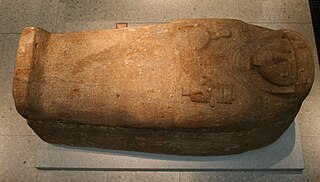
Hori was the High Priest of Ptah at the very end of the reign of Ramesses II. Hori succeeded Neferronpet in office.

Isetnofret was one of the Great Royal Wives of Pharaoh Merenptah.
The Twentieth Dynasty of Egypt is the third and last dynasty of the Ancient Egyptian New Kingdom period, lasting from 1189 BC to 1077 BC. The 19th and 20th Dynasties furthermore together constitute an era known as the Ramesside period.
Articles related to ancient Egypt include:

Tia was an ancient Egyptian high official under king Ramses II. His main title was that of an overseer of the treasuries. Tia was married to a woman with the same name, the princess Tia who was sister of Ramses II.
Panehesy(p3-nḥsỉ, also spelled Panehsy, Pinehesy, etc.) is an ancient Egyptian masculine name, meaning "the Nubian." It is the original Egyptian form of the Hebrew name Phinehas.



